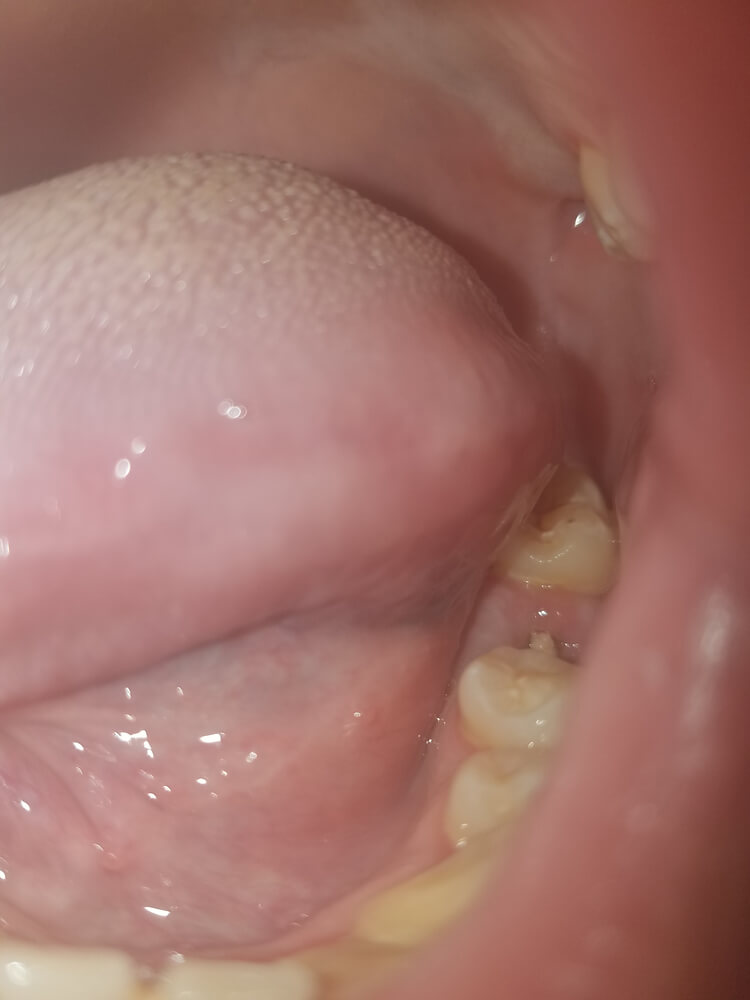Alveolar osteitis, commonly called dry socket is a painful dental condition that can occur after having a tooth extracted. A dry socket happens when the blood clot is dislodged from the site of a tooth extraction, exposing the bone and the nerves which can result in significant pain. To lower the risk of dry sockets and avoid painful symptoms, patients should follow the instructions from their OMS. These can include avoiding vigorous rinsing of the mouth, not brushing near the extraction site, and not using a straw for at least 24 hours, as well as stopping smoking before the extraction and avoiding tobacco during your recovery.
Dry socket
A dry socket is an infection that can arise in the days after a tooth is extracted. But how does this infection originate? How long does it last? What is the treatment in this article? We’re going, to explain it. After performing a dental extraction, the socket of the bed on which the roots of the tooth are seated is exposed, forming a blood clot on it.
This generates the first stage use of healing and protects the nerve endings in dealing with dental cavities. Occasionally, this clot may not form due to various factors, or it may disappear due to contamination by food, debris, or smoking during this healing phase, this produces a very painful process called rice socket.
The first mechanism of pain after an extraction is called a dry socket. Now it has some more formal names, but I find those formal names to be misleading. You see, when you have an extraction you can expect at least some mild to moderate pain. That pain normally starts to decrease or subside as the days progress.
However, for some people, the pain starts to increase on the second to 4th day after an extraction, which means you likely have developed a dry socket. This pain can be painful or moderate for some people. it’s very intense to ease your mind. Everything is most likely going to heal, just fine. It’s just a matter of getting through the pain for a few days to maybe even possibly a week, which is the hardest part you see. When the tooth was extracted, the dentist or the surgeon had to put a lot of pressure on the bones surrounding the tooth. We do this on purpose. We almost use a prying motion against the tooth and the bone.
Causes of Dry Socket
The specific cause of alveolitis or ray socket is not known, but is suspected that several factors may be involved in the development of this infection. Bacterial contamination of Delbolus. The proliferation of bacteria in Delbilolus can produce an infection where the protective clot disappears. Contamination with food debris. If cord-hiding measures are not followed, food debris may remain inside the virus, contaminating it. Excessive trauma at the time of EX destruction, excessive force applied at the time of tract, or a not-very-delicate surgical technique can produce this type of problem. Tobacco. As in many other aspects of health, tobacco is harmful and one of the main factors in the occurrence of a dry socket. Tobacco constricts blood vessels, minimizing blood supply to Del Violas. Genetics. Genetic factors involved in the development of TRY socket have been described.

Symptoms of Dry Socket
When the NEF endings are exposed, intense pain is generated in the area which usually appears during the first three days after the tooth distraction, severe pain radiates to the side of the face after a tooth distraction, bad taste bad breath falling glands under the neck, and jaw fever.
Types of Dry Socket
Depending on the symptoms developed with this infection, we can distinguish two types of dental aides, dry socket. The blood clot has not formed so the socket is empty and is possible to observe the Belair bone wet socket. The cloth has formed so it’s possible to see a bleeding and dark tissue in the area where distraction has been performed. However, this cloth is disrupted by some external cause such as tobacco or the accumulation of food debris.
Prevention of Dry Socket
Placing plasma-reaching row factors in Theviolus is an effective method to prevent the appearance of evaluates due to its bacteriostatic and tissue regenerating properties, but there are no effective recommendations to prevent the development of dry sockets, and avoid smoking, the days after traction.
Maintain proper oil hiding, ensuring especially the absence of any food debris in the intervened area. Try to chew on the opposite side to distract for at least a week. Avoid the consumption of alcoholic beverages the days after destruction. Avoid making efforts in the first 72 hours after destruction to prevent clot disruption.
Treatment of Dry Socket
To solve this problem, a series of steps can be carried out. The main treatment is symptomatic with pain medication and or antibiotics. It is also important to remove the food debris by irrigating the area with a selling solution. Curating of the socket may be indicated to contaminate Devon’s surface and cause bleeding for a new clutch to form. As we mentioned, another of the DE effective treatments is the placement in the Livius of plasma reaching growth factors since it has bacterial static properties and favors this SU regeneration. If you’ve already developed pain due to a dry socket, what dentists can do is they can place a material in the socket that is coated with something called eugenol, which is found in clove oil.
The genial will sit in the socket and sedate the pain for about 24 to 48 hours. So if you’re having this pain, you can go see your dentist and it’s most likely that this is the treatment that they will do to help ease your pain. And this can be done with and without numbing. But if done without numbing, it is initially more painful.
While the material is placed into the socket before I go on to other causes of post-operative extraction pain, you need to watch my daily brushing and flossing routine video. It will show you how to optimally take care of your teeth. With all the best products that I have tested out in other videos that I’ve made. These products include my favorite floss, toothbrush and toothpaste by far.
Why Does Dry Socket Happen?
The blood supply to this bone is important for the healing process once the tooth is taken out, but the blood supply to the bones surrounding the socket can be reduced because of the pressure and trauma on the bone during the extraction. Now this socket tries to heal in time, but the decreased blood supply doesn’t deliver the required healing factors to the socket to even maintain a blood clot. So in this case you likely lost the blood clot and thus this gets the name dry socket because there’s no clot in the socket. Once again, this condition can be very, very painful, but rest assured, everything will heal in time.

Who is More Likely to Get Dry Socket?
If your extraction was difficult you are more likely to develop a dry socket. However. I have seen very difficult extractions all the time that have no pain whatsoever after and then I’ve seen very simple extractions with a lot of dry sockets and intense pain after too. Now further extraction was towards the back of the mouth.
The more common the dry socket will be. Thus, wisdom teeth extractions will often develop dry sockets more commonly than, let’s say, one of your front teeth. Another point to be noted is smokers are also more likely to develop dry sockets.
Conclusion
In summary, we are briefly explaining about Dry sockets their causes, and why they are held in our mouths. To prevent this you need to know about the brief knowledge that’s why I give this complete information that is very from the condition of the dry socket.







